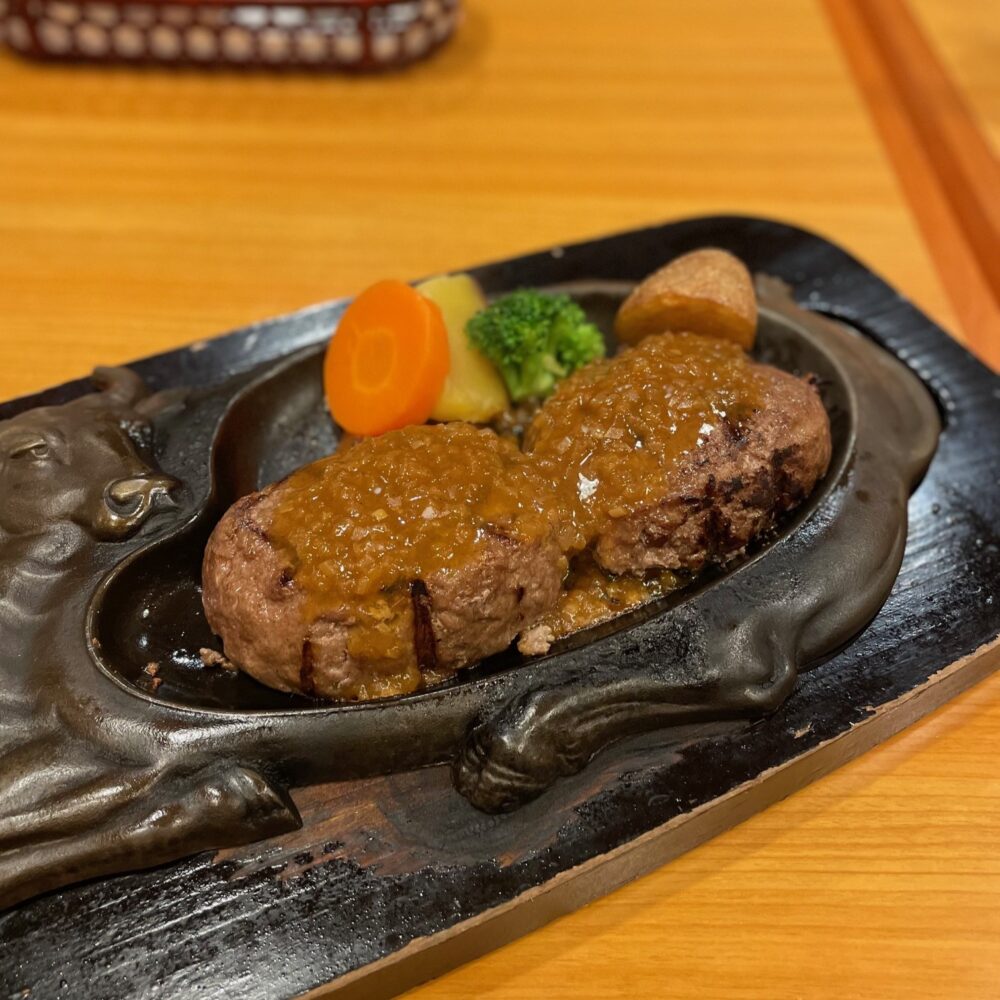Four local railways in Shizuoka Prefecture (Oigawa Railway)
Table of Contents

1: Introduction
I spent two days and one night in April on four regional railways in Shizuoka Prefecture. There are seven regional railway operators in Shizuoka Prefecture (95 in Japan as a whole), seven being the largest number in the country by prefecture. In order of operating distance, these are Tenryu Hamanako Railway (67.7 km), Oigawa Railway (65.0 km), Izu Kyuko (45.7 km), Izu Hakone Railway (29.4 km), Enshu Railway (17.8 km), Shizuoka Railway (11.0 km) and Gakunan Railway (9.2 km).
On the second day, I planned to take Gakunan Tramway, which has the catchphrase ‘the railway from which you can see Mount Fuji from every station.’ I gave up this time because clouds prevented me from seeing Mount Fuji.
2: Oigawa Railway
The first train I boarded was the Oigawa Railway. We left Tokyo early in the morning and boarded the 8:48 train from Kanaya Station, a retro train built in 1958 for express and limited express service on the Nankai Koya Line. Just getting on this train would be exciting for railway fans. The seats were full of patchwork fabric, and the seats were tilted when seated. These old seats were also very atmospheric and wonderful. I eventually made it to Oku Oi Lake. The one-way fare is 2,560 yen, but if you want to make a return trip, the Oigawa Round Trip Ticket for Adults 4,900 yen (valid for two days) is a better deal.
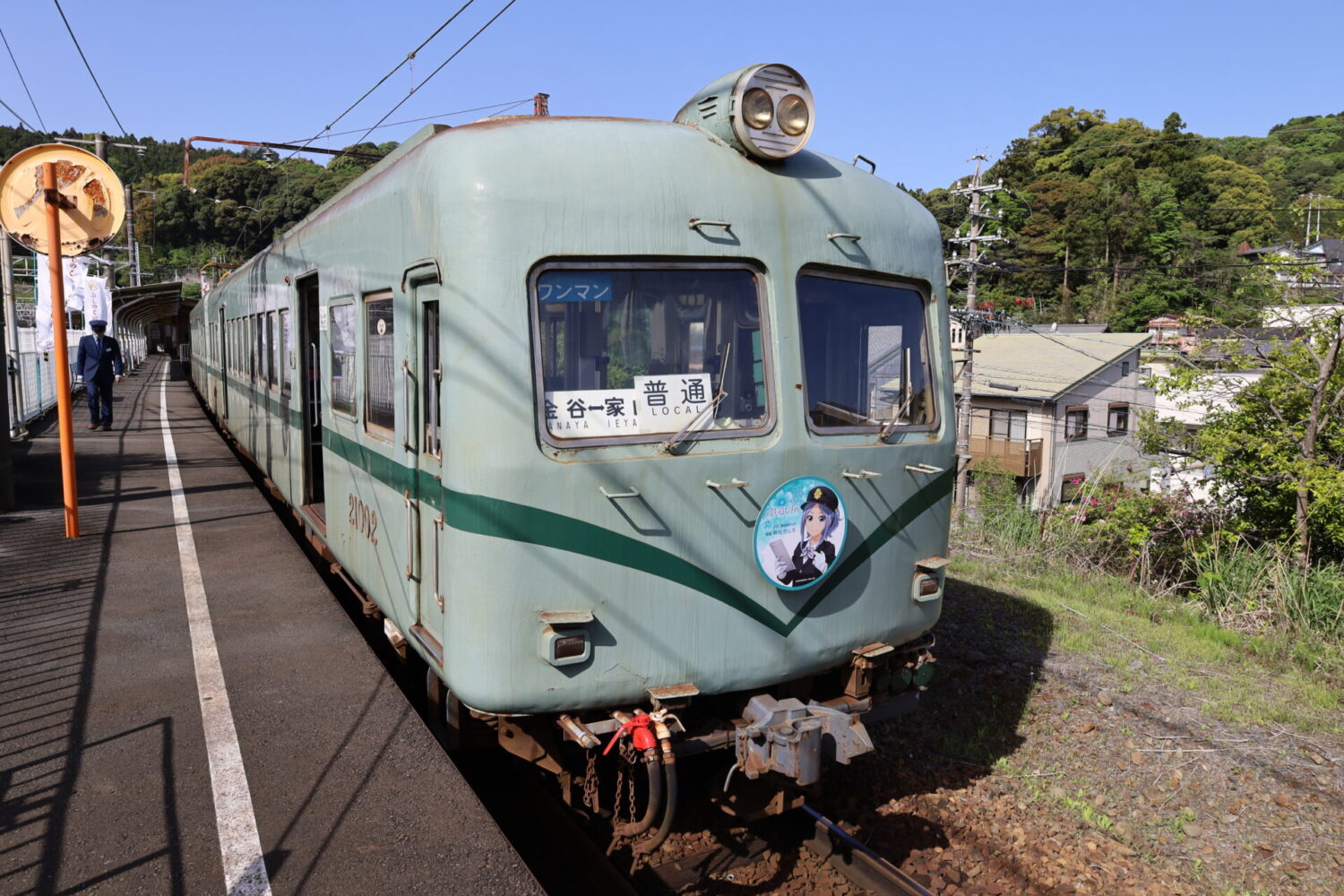

Oigawa Railway is known for its steam locomotives (SL), ‘Thomas the Tank Engine’ and Japan’s only apt-rack railway (Igawa Line); it has a sister railway relationship with the Brienz Rothorn Railway (Switzerland) and the Alishan Forest Railway (Taiwan) due to its preserved SLs and its mountain railway connections. An SL locomotive was parked on the turntable at Shin-Kanaya Station, the next station after the first station, Kanaya Station.
Like the Kominato Railway and the Isumi Railway in Chiba Prefecture, which I rode the other day, the Oigawa Railway runs through the mountains along the river. Hence, the scenery of the mountains and rivers was beautiful and refreshing. The fourth station from Kanaya Station is the “Gokaku Station,” popular with students preparing for exams. Gokaku Station was initially called “Goka Station” when it first opened but was renamed ‘Passing Station’ in 2020.
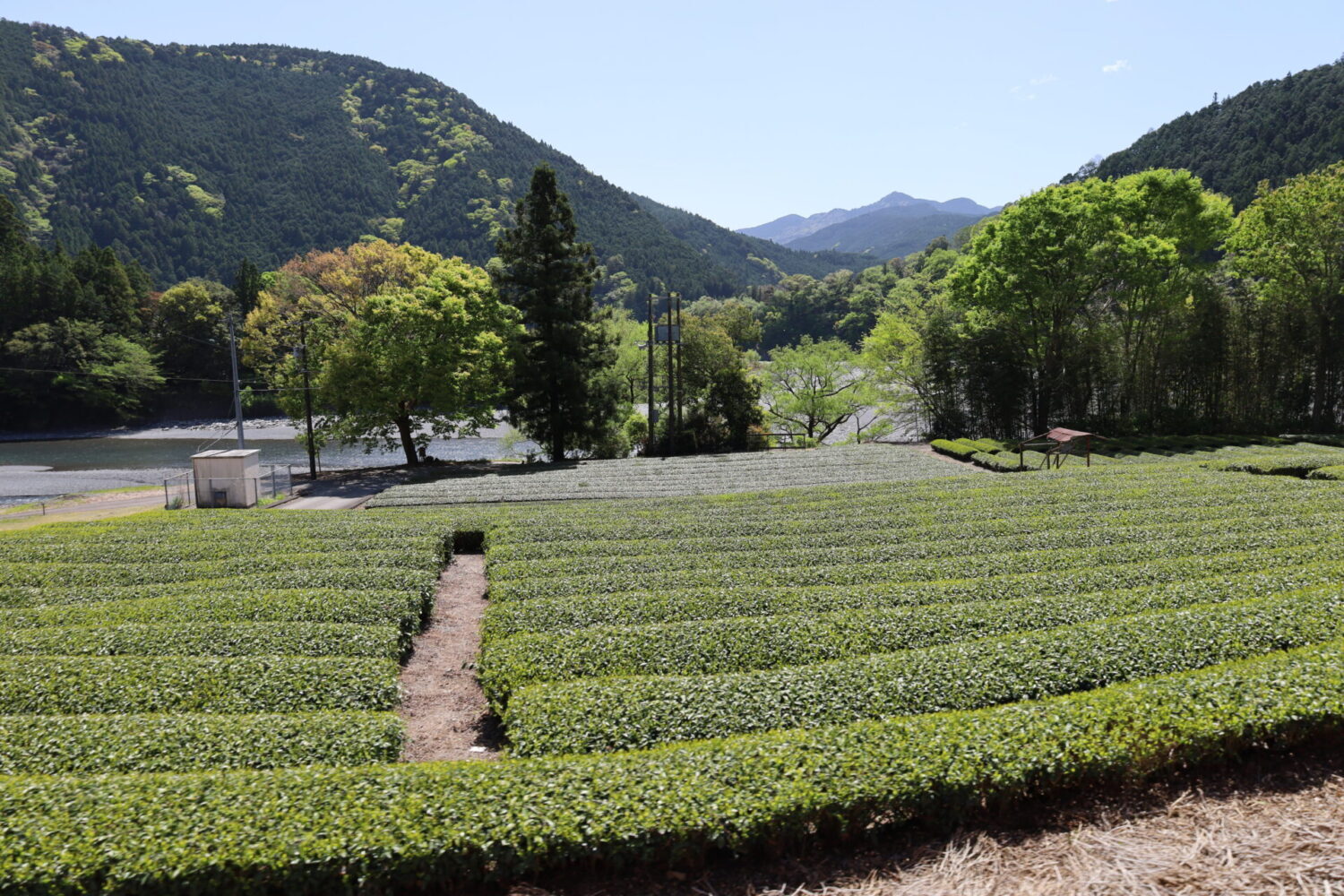
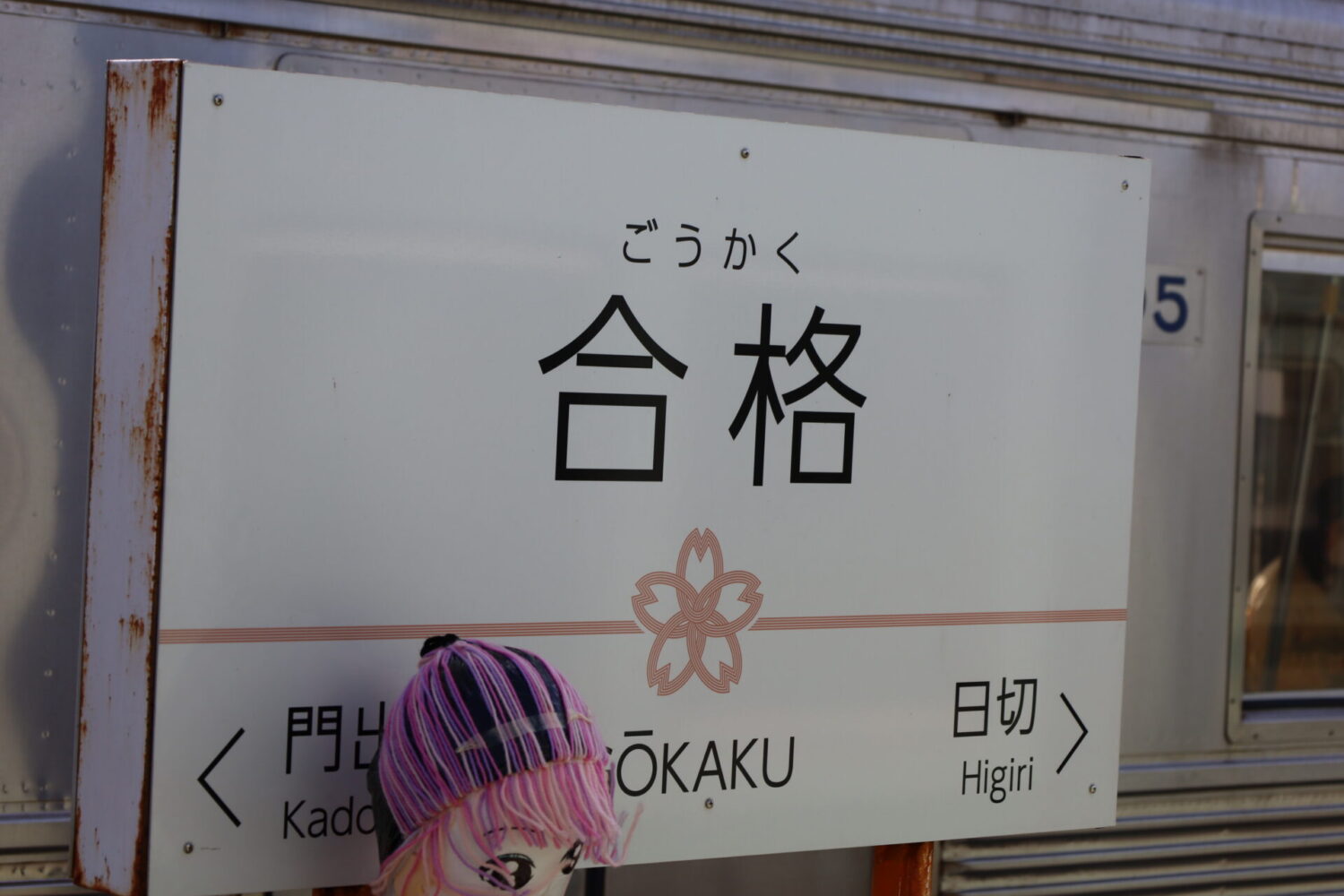
Due to damage caused by a typhoon in September 2022, Oigawa Railway is using the bus as substitute transport between Ieyama and Senzu Stations. In 2023, the buses will operate mainly on Saturdays, Sundays, public holidays, Mondays, and Fridays, from 29 April to 25 December. On the other hand, the steam locomotives (SL) operate almost daily.
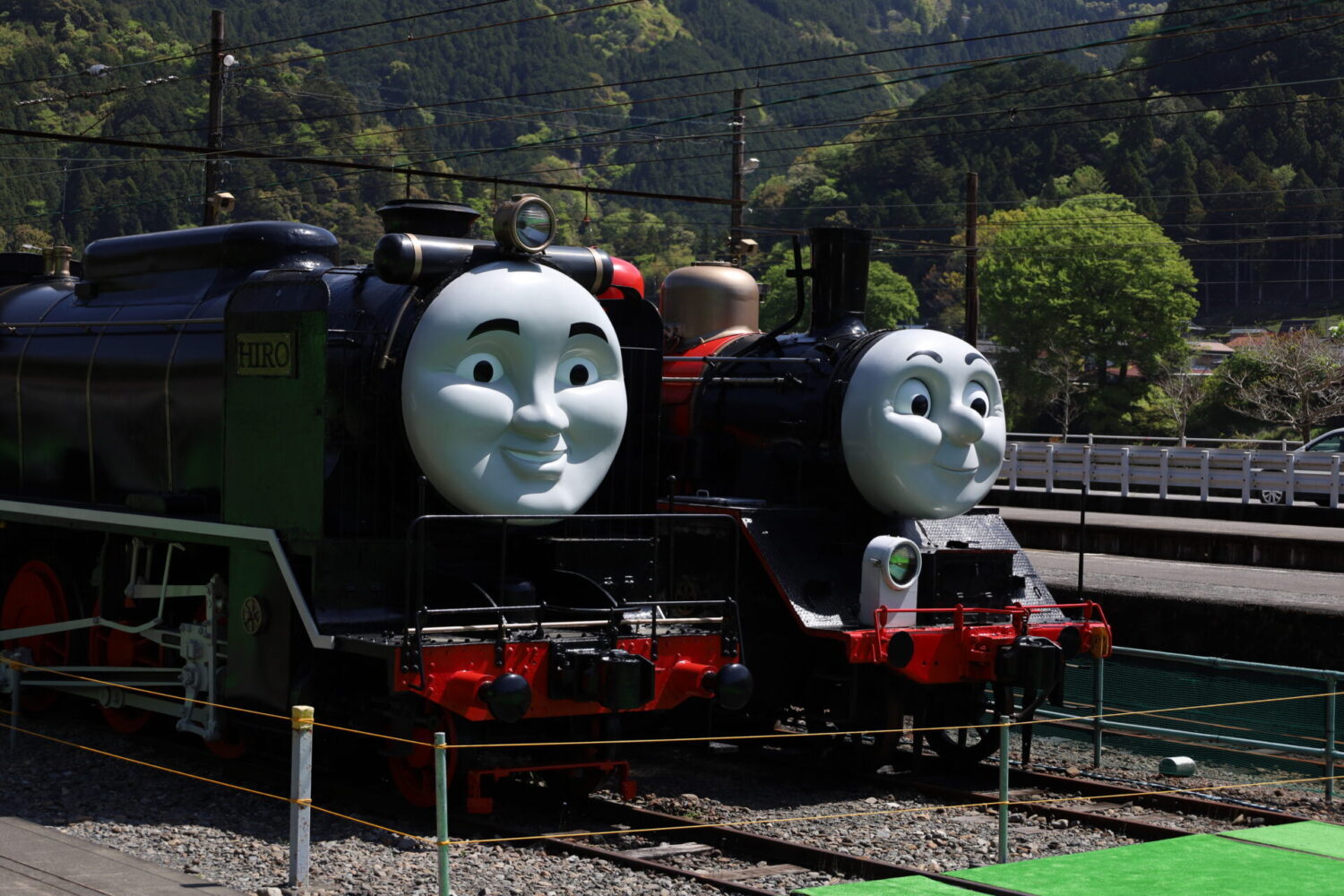
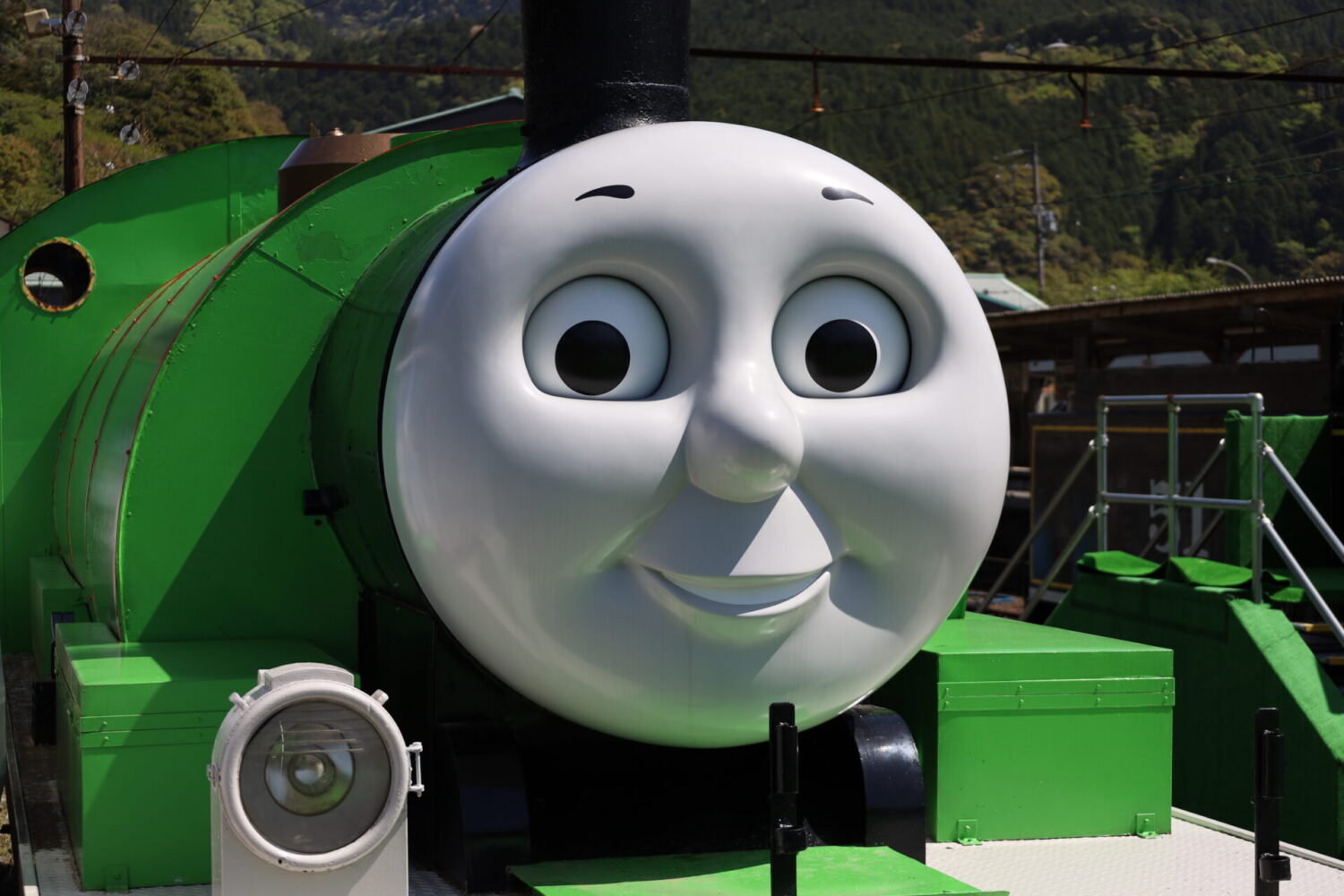
The train changed to a miniature on the Igawa Line at Senkashira Station. The train runs from Abt Ichishiro Station to Nagashima Dam Station and is Japan’s only Abt system train. The “Abt” system is a railway operating on steep slopes with interlocking toothed rails called “rack rails” in the middle of the track. The Abt system train on the Igawa Line climbs the most vertical gradient in Japan, a 90-per-mil grade (90 meters high for a horizontal distance of 1,000 meters). Apto Ichishiro and Nagashima Dam stations link up the abt electric locomotives. You can get off the train at the stations to watch them linked.
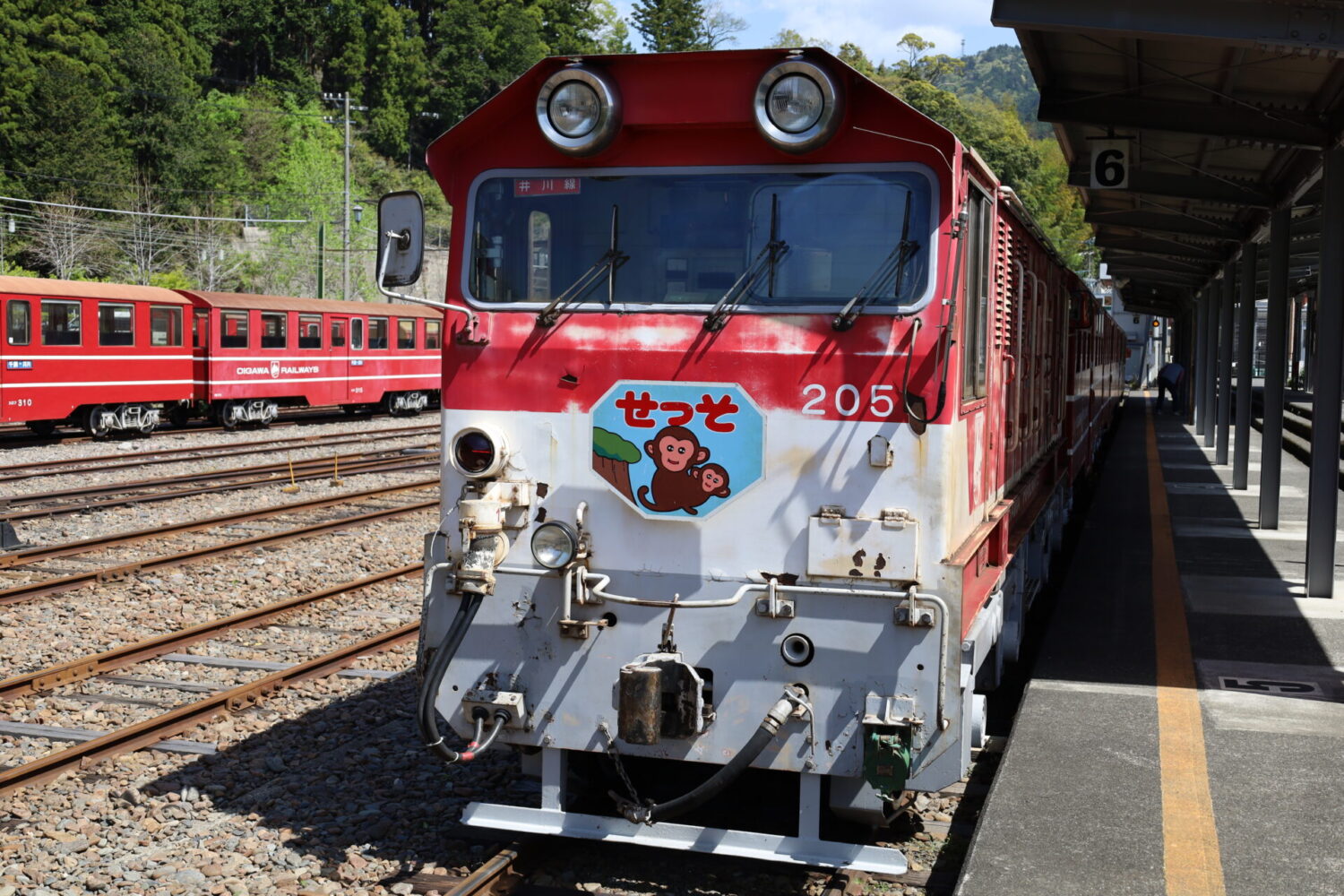
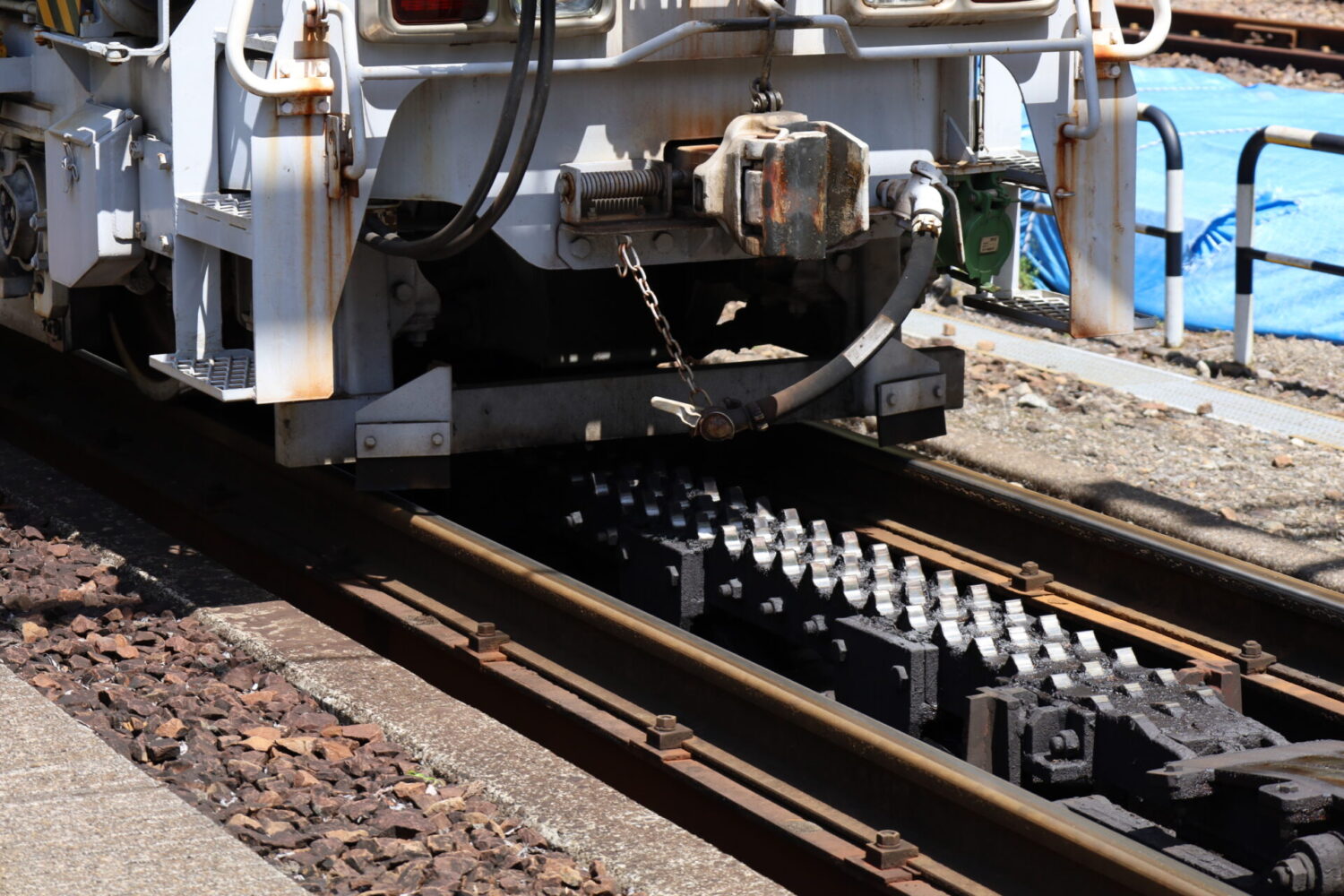
The massive Nagashima Dam, which is 109 m high and 308 m long, was mighty and discharging water. The lake formed by this Nagashima Dam is Lake Sesso. On the peninsula of Lake Sesso is Oku Oi Lake Station, where two railway bridges, the Rainbow Bridges, span the lake. The Rainbow Bridge was named before the Rainbow Bridge in Tokyo.
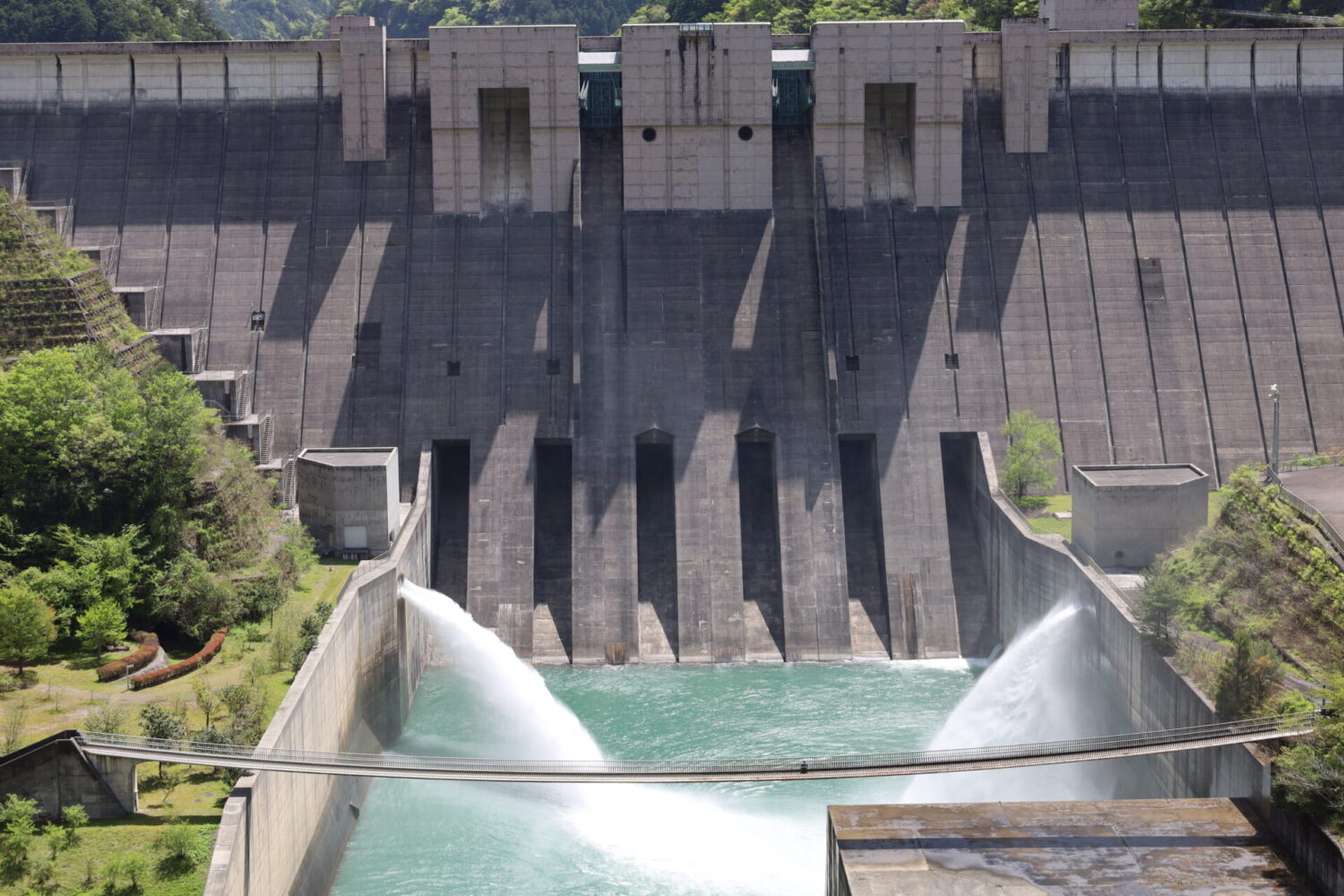
The steel bridge, Rainbow Bridge, can also be crossed on foot and offers a spectacular view from a hill with a good vantage point. The picture is famous on many TV programs, photo magazines, and social networking sites. Above Oku Oi Lake Station is Lake Cottage Oku Oi, where you can eat and drink. On the day I visited, the area was crowded with many tourists, including foreigners.
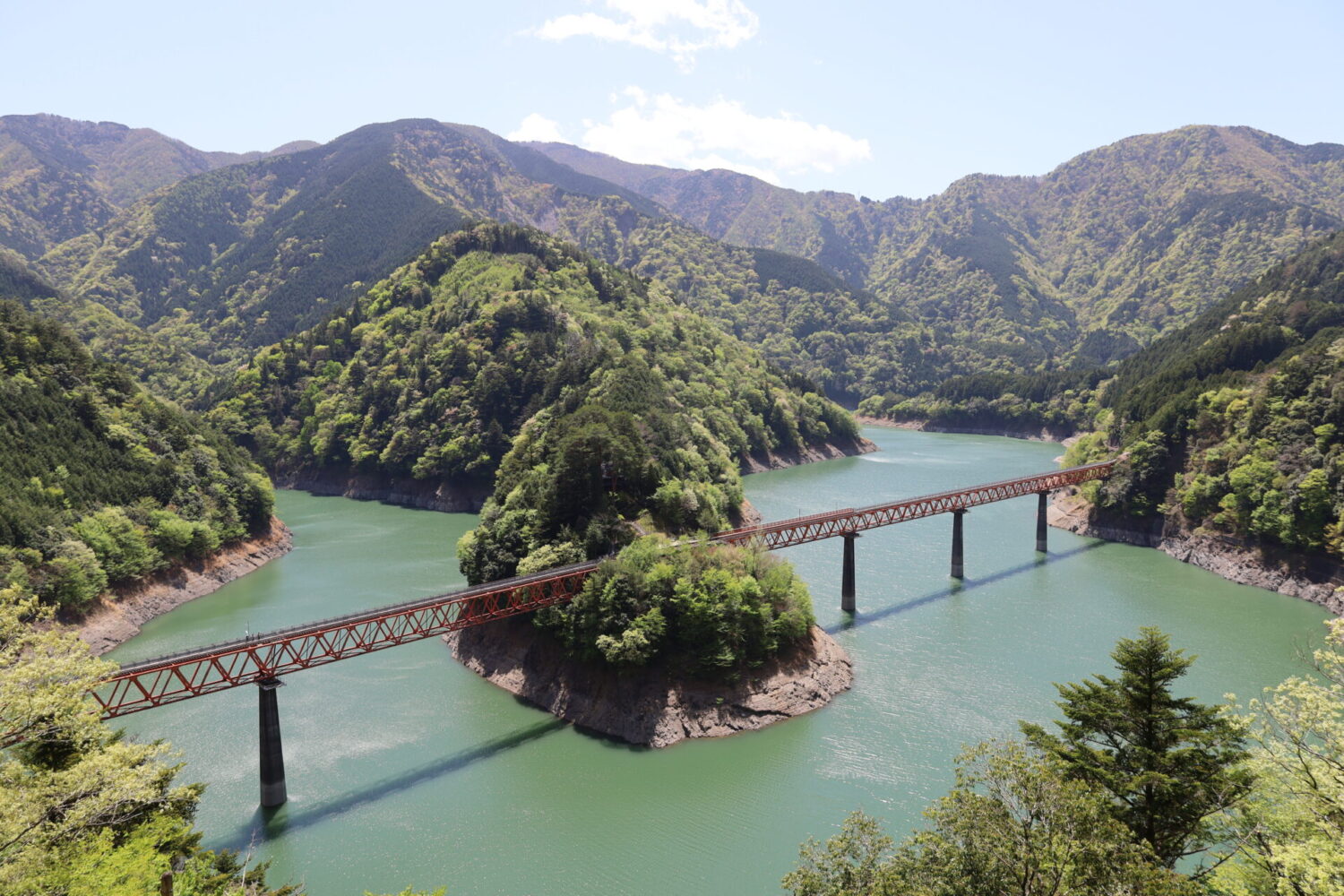
3: Horai Bridge
After enjoying the Oku Oi Lake Station scenery, we returned to Kanaya Station, the first station on the Oigawa Railway. I headed to Horai Bridge from JR Shimada Station. It takes about 20 minutes on foot from JR Shimada Station to Horai Bridge.
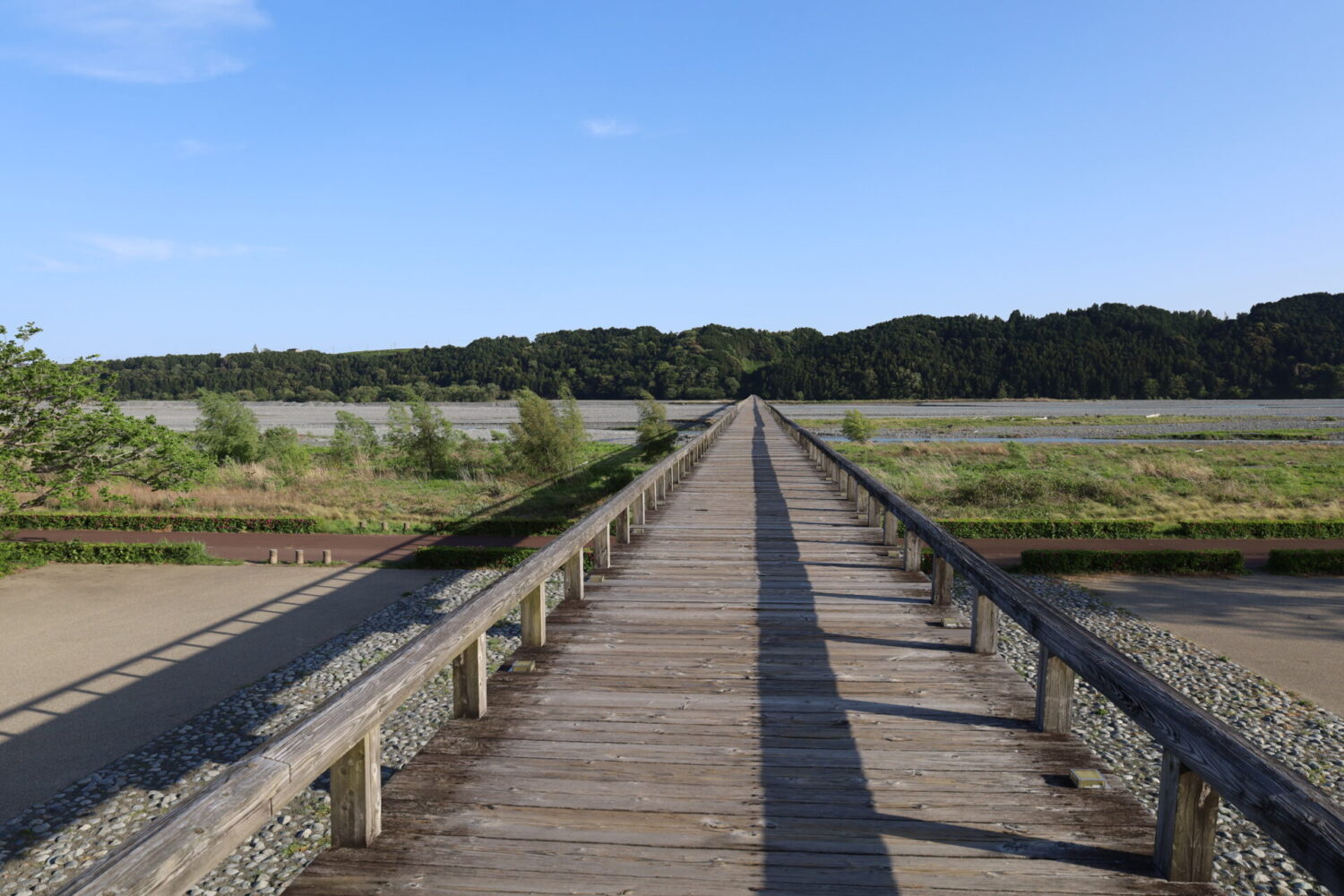
The Horai Bridge is the ‘world’s longest wooden footbridge’ over the Oi River near its mouth; it was recognized by Guinness World Records in 1997 and is 897.4 meters long. Crossing the Horai Bridge requires a toll of 100 yen (10 yen for schoolchildren). The bridge’s parapets were low, and the wind was strong, so it was surprisingly quite frightening for the 10 minutes it took to cross.
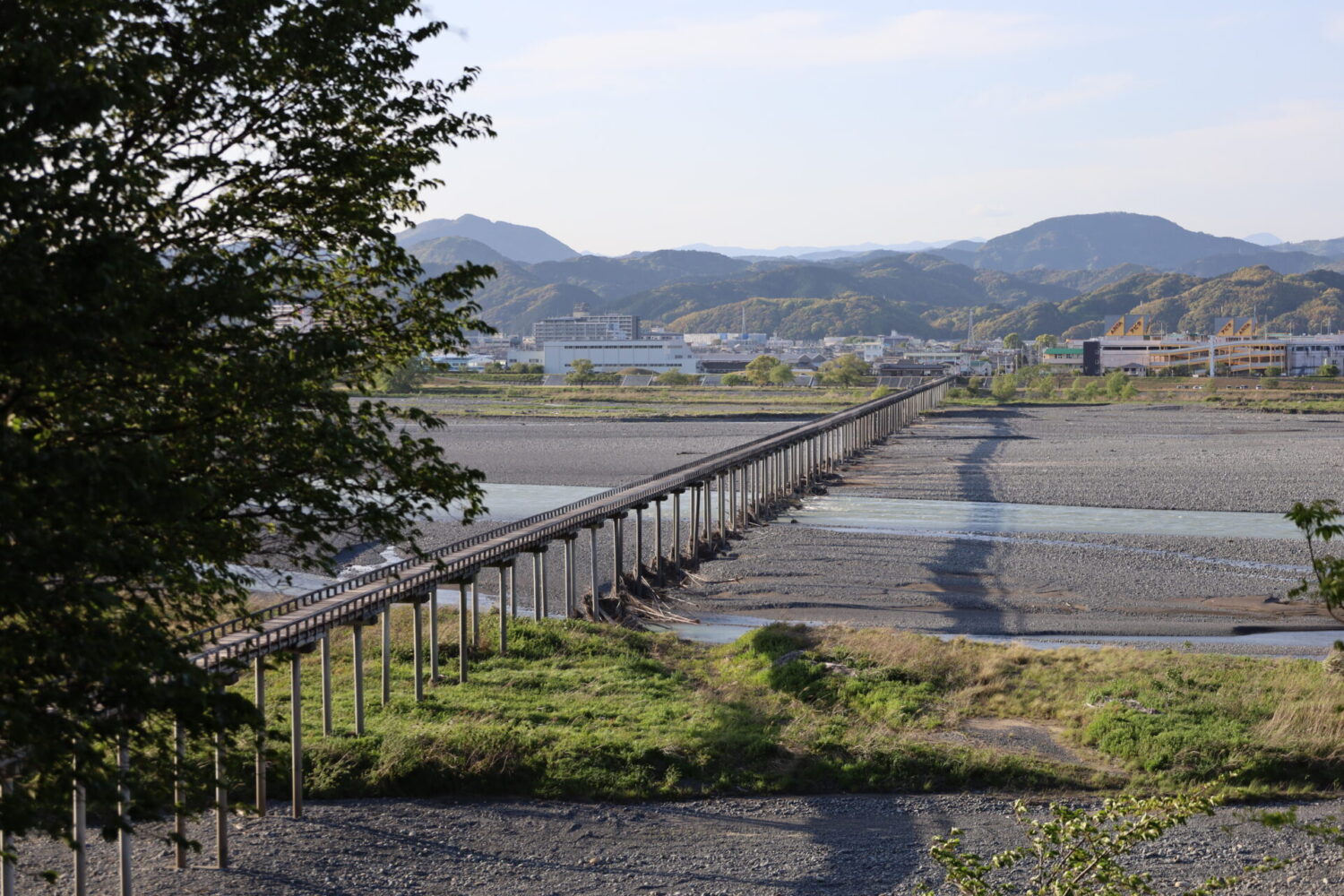
During the Edo period (1603-1868), the Oi River was the most challenging part of the Tokaido Highway. The force of the water flowing down the Oi River was so strong that it would have been hard to cross the river on the shoulders of a man-passenger or a wooden plate. Four people carry a wooden plate to carry passengers across the river. At the time, the Oi River had no bridges. Human power could only cross it (boats were also banned). I could understand the difficulty of crossing the Horai Bridge.
4: Hamamatsu Gourmet
After enjoying the Horai Bridge, I traveled by JR to Hamamatsu City for dinner. I enjoyed Hamamatsu Gyoza, Enshu-yaki, Horumon-yaki, and Genkotsu hamburger steak, known as ‘Hamamatsu Gourmet.’
Hamamatsu, Miyazaki, and Utsunomiya have always been among the top three gyoza-consuming cities (3rd in 2022). Hamamatsu is characterized by a style of eating gyoza in which bean sprouts are placed in the middle of the grilled gyoza.
The first restaurant to put bean sprouts on gyoza was Ishimatsu Gyoza, which I visited this time. There was a bit of a queue at 6.30 pm, but the turnover of customers was quick, and we were soon seated. Ishimatsu Gyoza also had ‘hormone-yaki’ (grilled hormone). In Hamamatsu, it is normal for gyoza restaurants to have a ‘hormone-yaki’ menu.
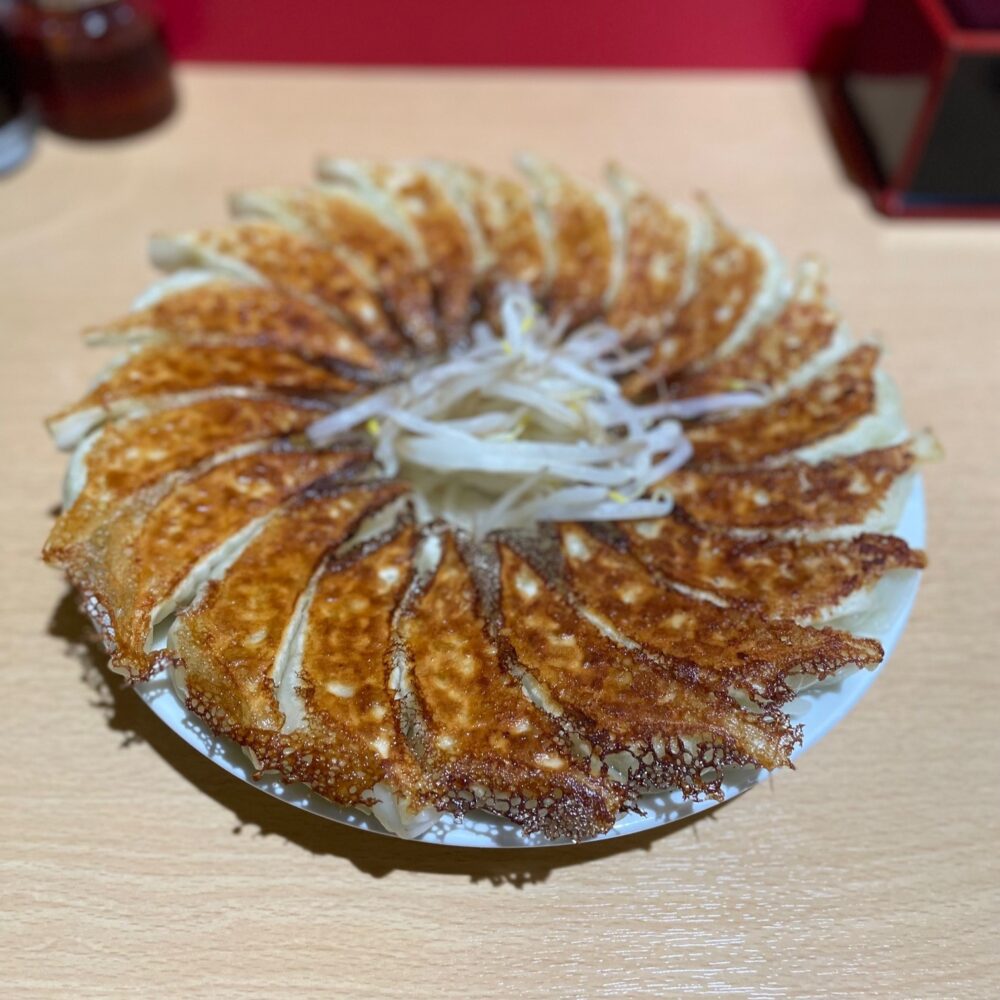
Enshu-yaki is an okonomiyaki with “Takuan” (pickled radish) and red ginger. I have never heard of Enshu-yaki. I ate Enshu-yaki and Hormon-yaki at Tachi-nomiya Jandara & LA JANN. It was a good, cheap, tasty restaurant, partly because it was a standing bar.
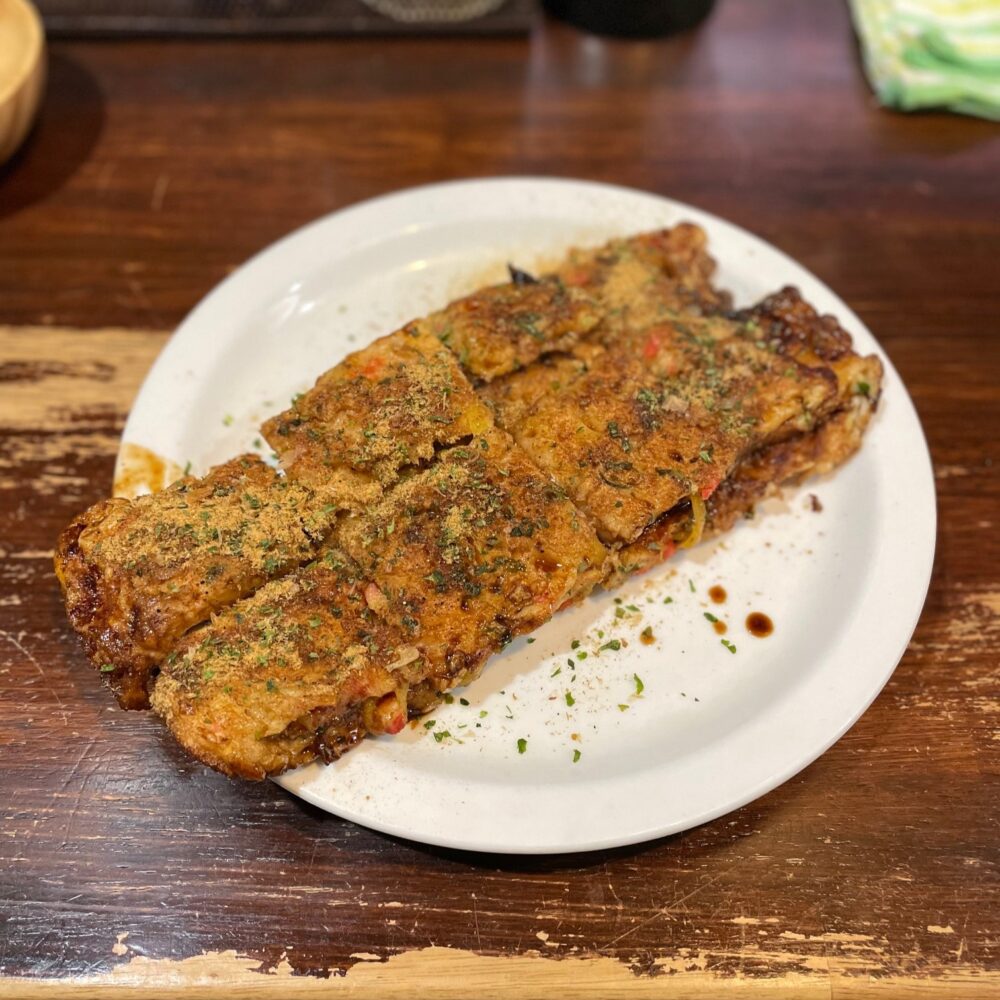
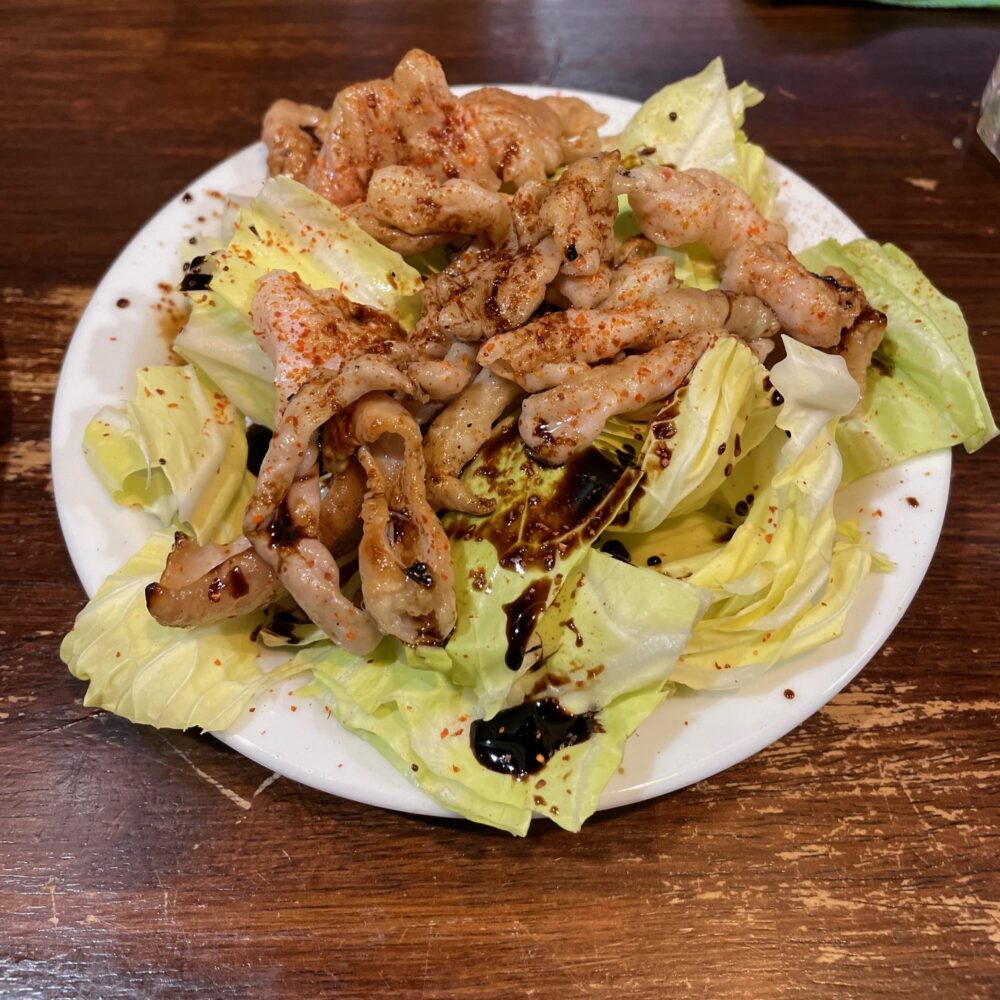
I had the Genkotsu hamburg steak at Restaurant Sawayaka, a chain of hamburg steak restaurants in Shizuoka Prefecture. Sawayaka is a popular restaurant where you can wait 2-3 hours. My wait was 45 minutes. The Genkotsu hamburg steak is served with two stakes the size of dukes. When hamburg steak is served, the inside is still uncooked and lean, so the waiter cuts it in two with a knife and cooks the lean partly on a grill before eating. This hamburg steak is tasty with a generous portion. Not only the taste, but the staff are well trained, and I was very impressed by their cheerful and efficient work. I highly recommend everyone to visit this restaurant when you are in Shizuoka.
